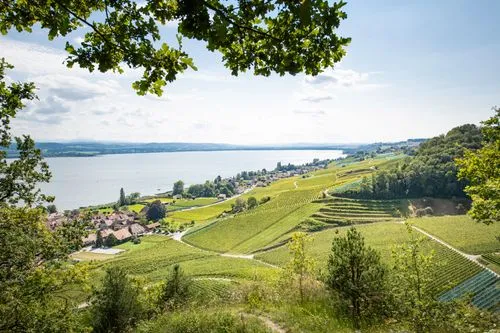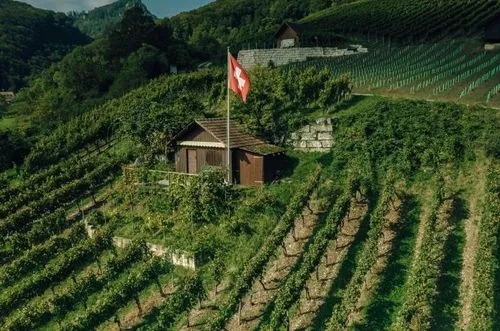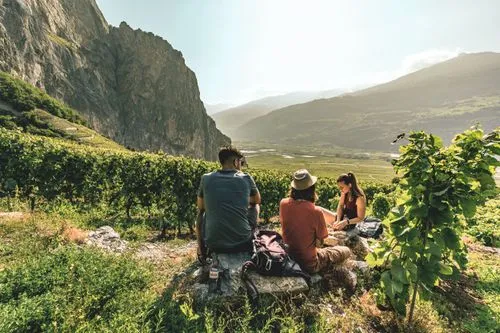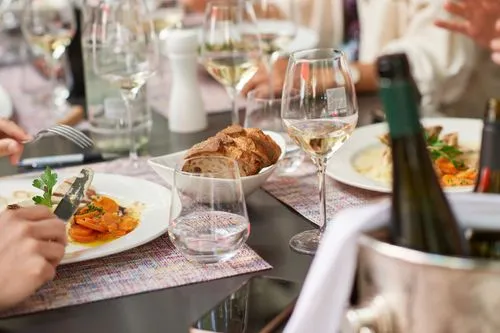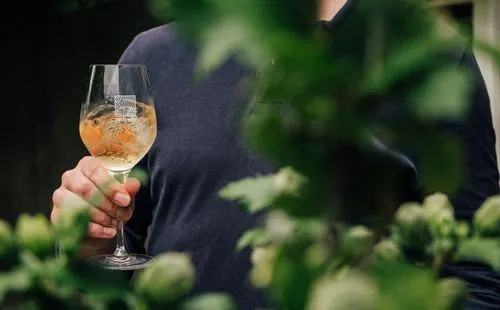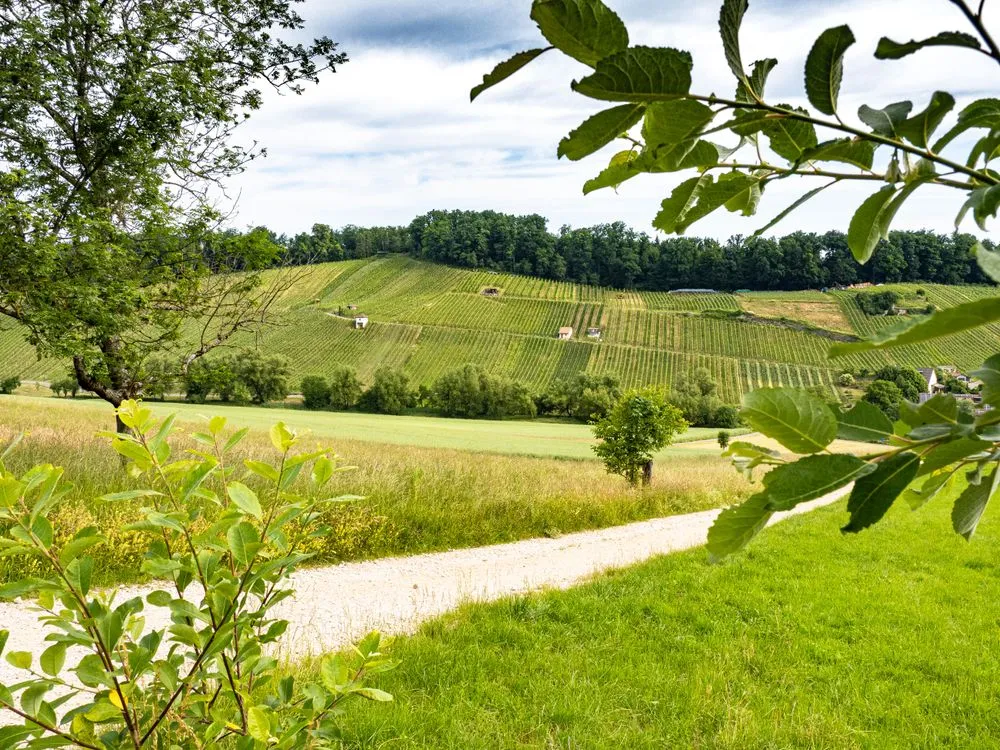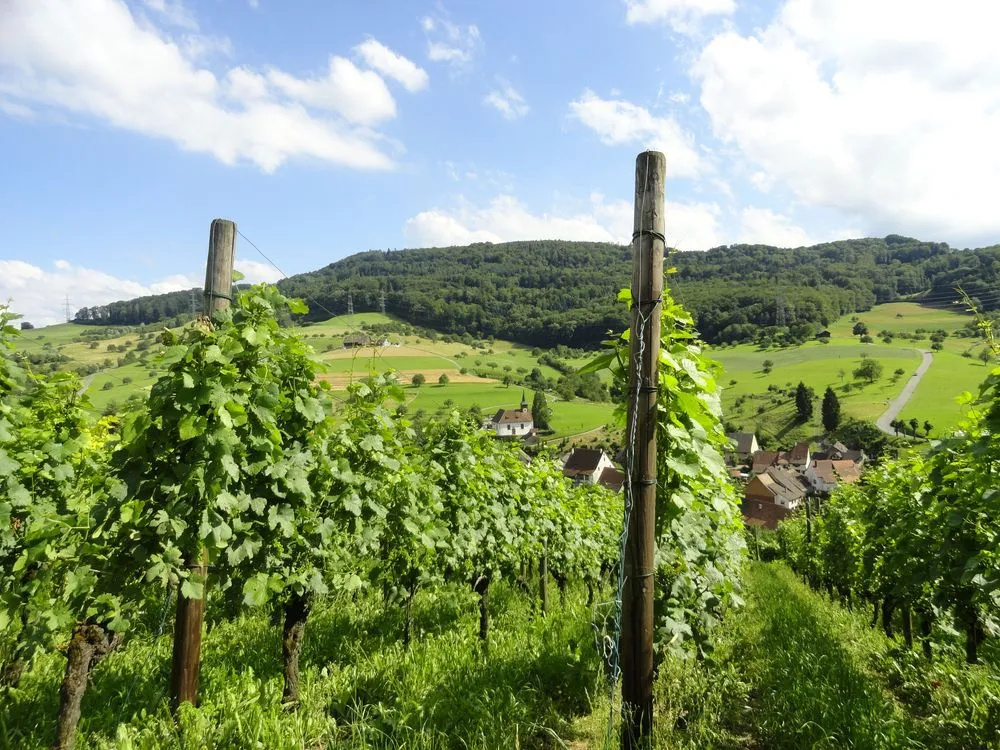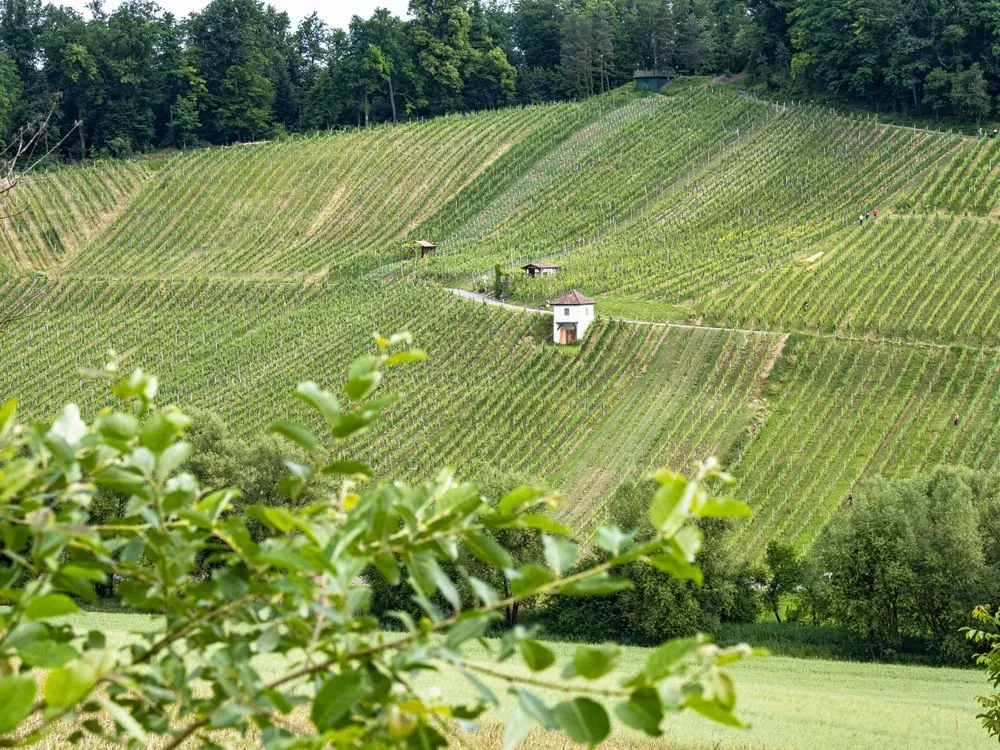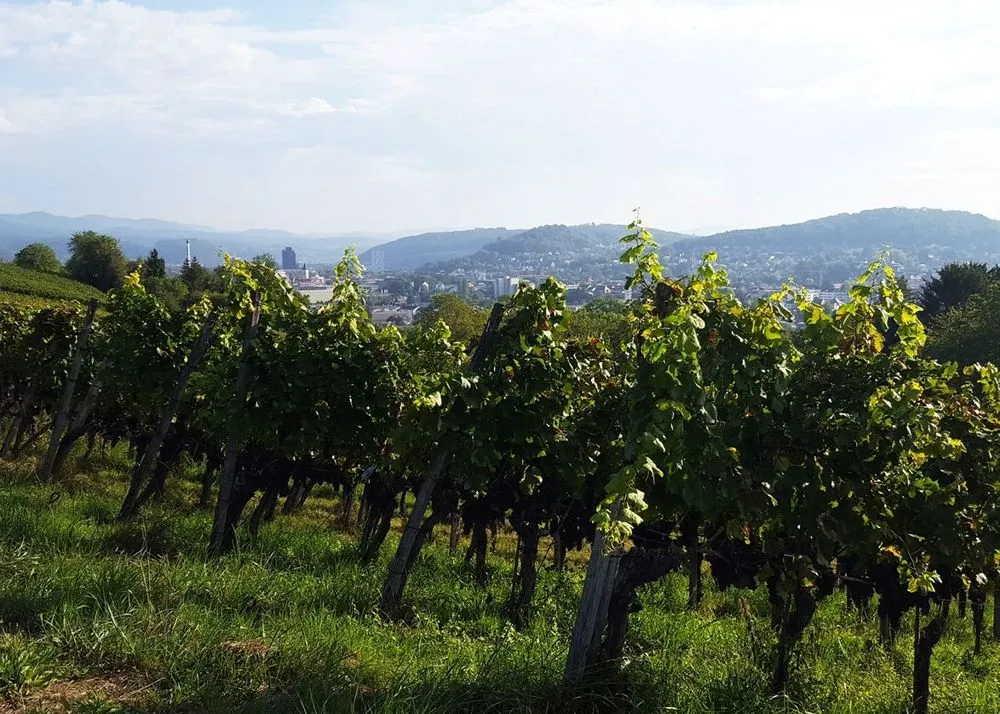The favourable winegrowing climate is influenced by the Upper Rhine Plain, which offers a connection to the Mediterranean. This results in warming effects, particularly noticeable in spring, when cherry trees in the lower elevations near the Birs and Rhine bloom early. The heat-loving vines benefit from this. However, the sunny hours in autumn carry the risk of sunburn, and the cold nights can lead to early night frosts, which can damage the vines.
The south-facing slopes in the tabular and folded Jura lie below 500 metres above sea level and have chalky soils, offering ideal conditions for viticulture.
In recent years, the variety of grapes has expanded significantly, particularly with the introduction of fungus-resistant (PIWI) varieties. Nevertheless, Pinot Noir remains the dominant grape, followed by Riesling-Silvaner, Sauvignon Blanc, Kerner, and Pinot Gris. New varieties like Cabernet Jura, Cabernet Cortis, Solaris, and Muscaris are also gaining importance.
